Avoid unnecessary spending with this ultimate Impulse Buying Checklist
1. Introduction: What is Impulse Buying?
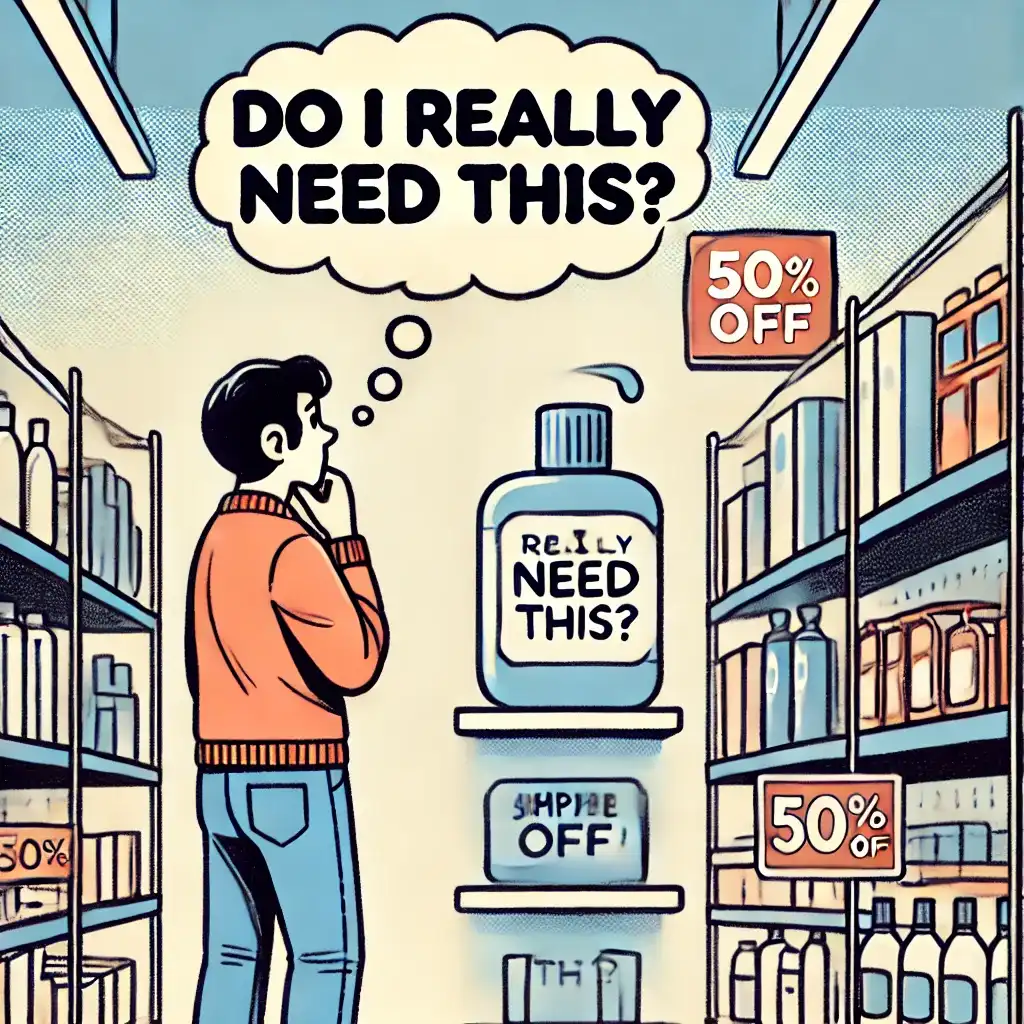
We’ve all been there—grabbing something off the shelf just because it felt good in the moment! Whether it’s a trendy gadget, a limited-time sale, or that extra snack at checkout, impulse buying is a universal experience.
To avoid unnecessary spending, following an Impulse Buying Checklist can help you make more mindful purchasing decisions. Impulse buying refers to unplanned, spontaneous purchases driven by emotions rather than necessity. With the rise of online shopping, social media advertisements, and targeted marketing, Gen Z, teens, and young professionals are more vulnerable to impulsive spending than ever. A well-structured Impulse Buying Checklist can serve as a powerful tool to rethink purchases before making them.
Impulse buying refers to unplanned, spontaneous purchases driven by emotions rather than necessity. With the rise of online shopping, social media advertisements, and targeted marketing, Gen Z, teens, and young professionals are more vulnerable to impulsive spending than ever.
2. Emotional and Psychological Triggers

Ever found yourself shopping just because you’re bored or stressed? That’s not a coincidence! Impulse buying is often triggered by emotional and psychological factors. Following an Impulse Buying Checklist can help you recognize and control these triggers.
Why Do We Fall for Impulse Buying?
🛍 Stress & Emotional Spending: Many people shop as a way to cope with stress, anxiety, or sadness—also known as retail therapy.
⏳ FOMO (Fear of Missing Out): Limited-time offers, flash sales, and countdown timers create urgency, making us believe we need to buy something right now.
📱 Social Media Influence: Platforms like Instagram and TikTok bombard us with influencer promotions and viral products, leading to impulsive purchases.
💳 Convenience & Ease of Purchase: One-click ordering and digital wallets make it easier to spend without second thoughts.
🔹 Example: Ever bought something during a Black Friday sale just because it was 50% off, even though you didn’t really need it? A proper Impulse Buying Checklist can help you pause and rethink your spending habits.
3. The Financial Impact of Impulse Spending
Impulse buying may seem harmless, but it can add up over time and disrupt financial stability. Using an Impulse Buying Checklist can help you recognize spending patterns and make better financial choices.
How Impulse Buying Affects Your Money
💸 Unplanned Expenses: Frequent impulse purchases can throw off your monthly budget.
📉 Savings Drain: The average millennial spends over $200 per month on impulse buys—money that could have been used for savings or investments.
💳 Debt Accumulation: Many impulsive buyers rely on credit cards, leading to unnecessary debt and high-interest payments.
✅ Impulse Buying Checklist Tip: Before making a purchase, ask yourself, “Do I need this, or do I just want it?” Pausing for a moment can prevent regretful spending!
4. Why Impulse Control Matters
The good news? Impulse buying doesn’t have to be a financial trap. By using an Impulse Buying Checklist, you can shift from impulsive buying to mindful spending. This simple habit helps you take control of your finances and ensures that every purchase aligns with your needs and goals.
Before you check out, ask yourself:
✔️ Is this purchase necessary, or am I buying on impulse?
✔️ Will this item add long-term value to my life?
✔️ Can I afford it without affecting my budget?
Small changes can lead to smarter spending! 🛒💡
Actionable Steps with the Impulse Buying Checklist
Take control of your finances with this practical, easy-to-follow guide designed to curb impulse purchases.
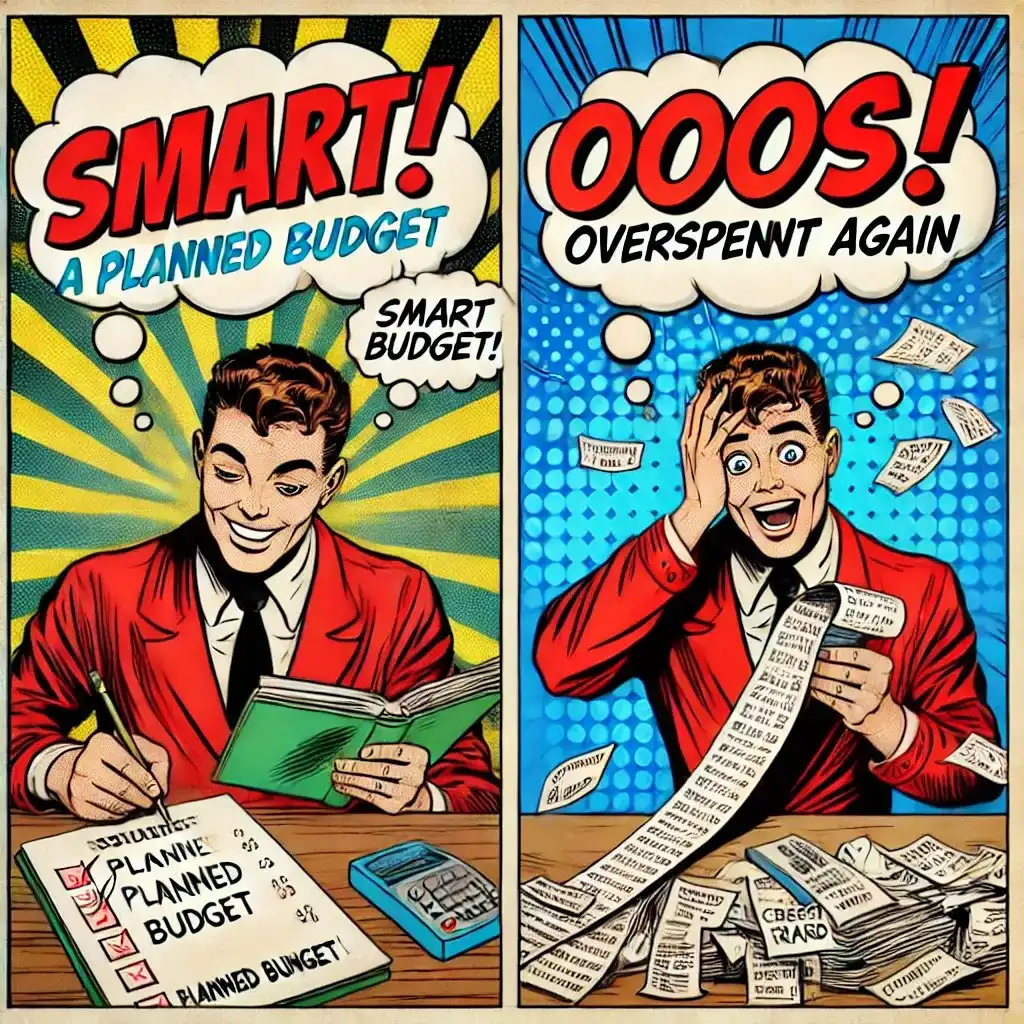
1. The Impulse Buying Checklist: Your Path to Mindful Spending
Impulse buying often stems from emotional or situational triggers. This checklist is your ultimate tool to pause, reflect, and make better purchasing decisions.
Step 1: Pause and Reflect
- Before making any purchase, ask yourself:
- “Do I really need this?”
- “How will this benefit me in the long run?”
- Follow the 24-Hour Rule: Wait at least a day before committing to a purchase, especially for non-essential items.
Step 2: Stick to a Budget
- Create a clear budget that divides your income into needs, wants, and savings.
- Use the 50/30/20 Rule:
- 50% for necessities (rent, groceries).
- 30% for wants.
- 20% for savings or debt repayment.
- Track every expense to ensure you’re not exceeding your “wants” allowance.
Step 3: Avoid Emotional Triggers
- Recognize when you’re shopping out of stress, boredom, or peer influence.
- Tips to avoid:
- Avoid shopping apps or websites during emotional lows.
- Replace the habit with a healthy alternative, like a walk or journaling.
Step 4: Create a Shopping List (and Stick to It!)
- Before heading to the store or opening an online shopping app, prepare a detailed list of what you need.
- Commit to buying only what’s on the list—no exceptions!
Step 5: Compare Before You Commit
- Research alternatives and prices before making a purchase.
- Many times, a similar (and more affordable) option can meet your needs.
2. Use Tools and Apps to Stay on Track
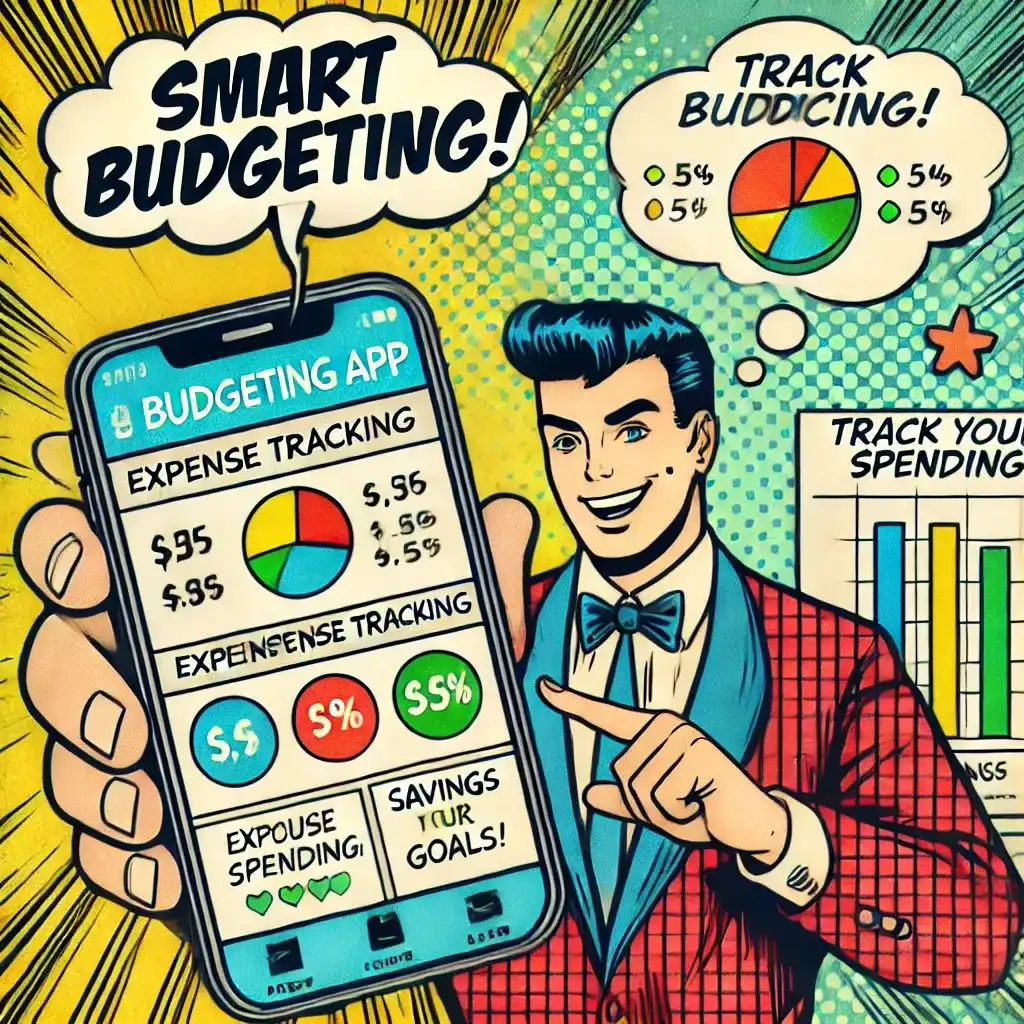
Technology can be your ally in curbing impulse spending. Using an Impulse Buying Checklist along with smart tools can help you monitor and control your shopping habits effectively.
Budgeting Apps:
✔️ Mint and YNAB (You Need a Budget) help track expenses and maintain a budget.
✔️ PocketGuard alerts you before overspending, keeping impulse purchases in check.
Online Purchase Blockers:
✔️ Use browser extensions like ImpulseBlocker or StayFocusd to block shopping websites during impulsive moments.
Savings Goals Apps:
✔️ Qapital and Digit automate savings and ensure your spending aligns with financial goals.
By combining technology with an Impulse Buying Checklist, you can develop mindful spending habits and avoid unnecessary purchases! 💰📉
3. Building Positive Spending Habits
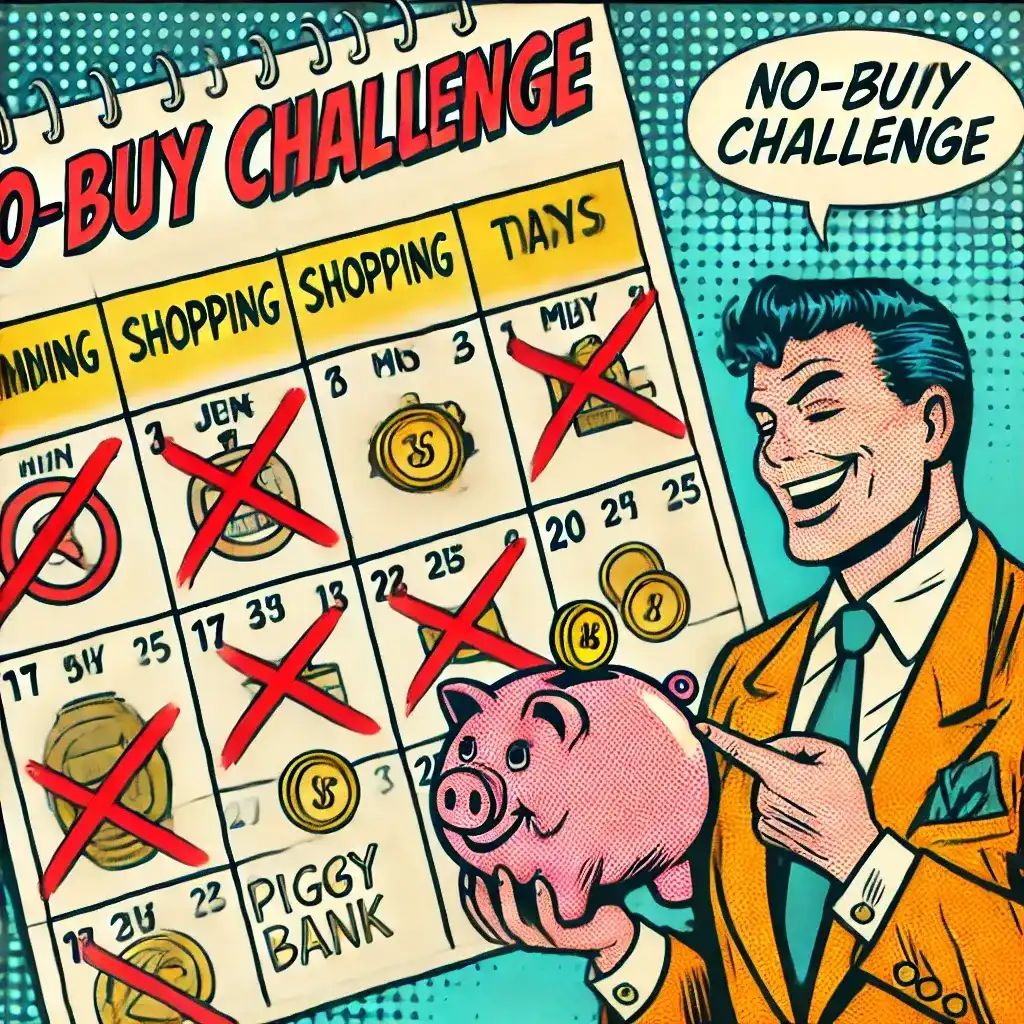
Curbing impulse spending isn’t just about stopping bad habits—it’s about creating better ones. Using an Impulse Buying Checklist can help you stay on track and build mindful financial habits.
Start Small with “No-Buy Challenges”
✔️ Dedicate specific days (or weeks) to avoid non-essential purchases.
✔️ Example: “This week, I’ll spend nothing on takeout!”
Celebrate Small Wins
✔️ Reward yourself for meeting your saving goals—but do it wisely!
✔️ Example: “I avoided impulse spending for a month, so I’ll treat myself to a planned movie night!”
Practice Gratitude and Contentment
✔️ Focus on what you already have, rather than what you think you’re missing.
✔️ Journaling three things you’re grateful for each day can shift your perspective on spending.
By consistently following an Impulse Buying Checklist, you can take control of your spending and build a healthier financial future! 💡💰
4. Recovering from an Impulse Purchase
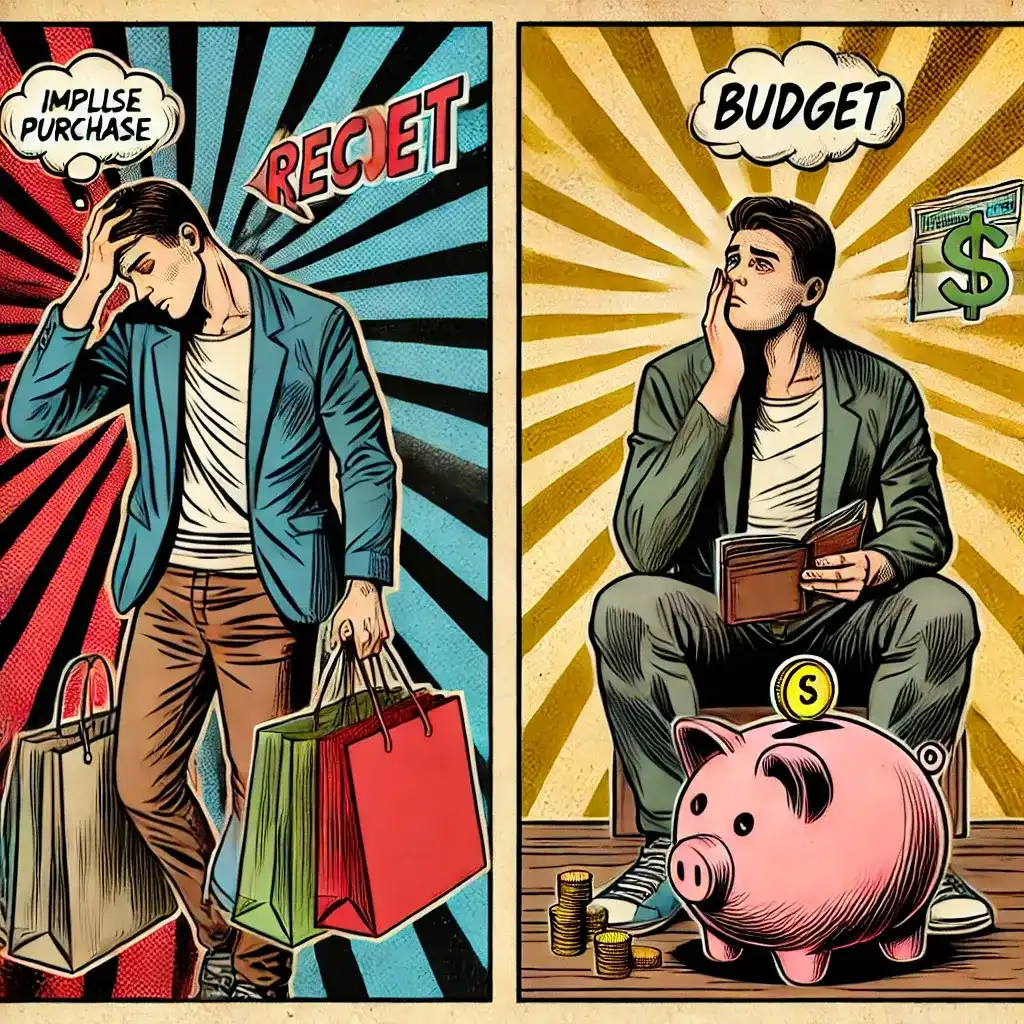
We’re all human, and occasional slip-ups are okay. Instead of feeling guilty, use an Impulse Buying Checklist to regain control and avoid future regrets.
How to Bounce Back from Impulse Buying
✔️ Evaluate the Purchase – Ask yourself, “Was it worth it?” If not, note the lesson for next time.
✔️ Return if Possible – Many stores offer returns—use this option for items you regret buying.
✔️ Learn from It – Identify the trigger that led to the purchase and update your Impulse Buying Checklist to prevent similar situations in the future.
By following these simple steps, you can turn an impulse buy into a learning experience and stay on track with mindful spending. 💡💰
5. Conclusion: Take Control Today
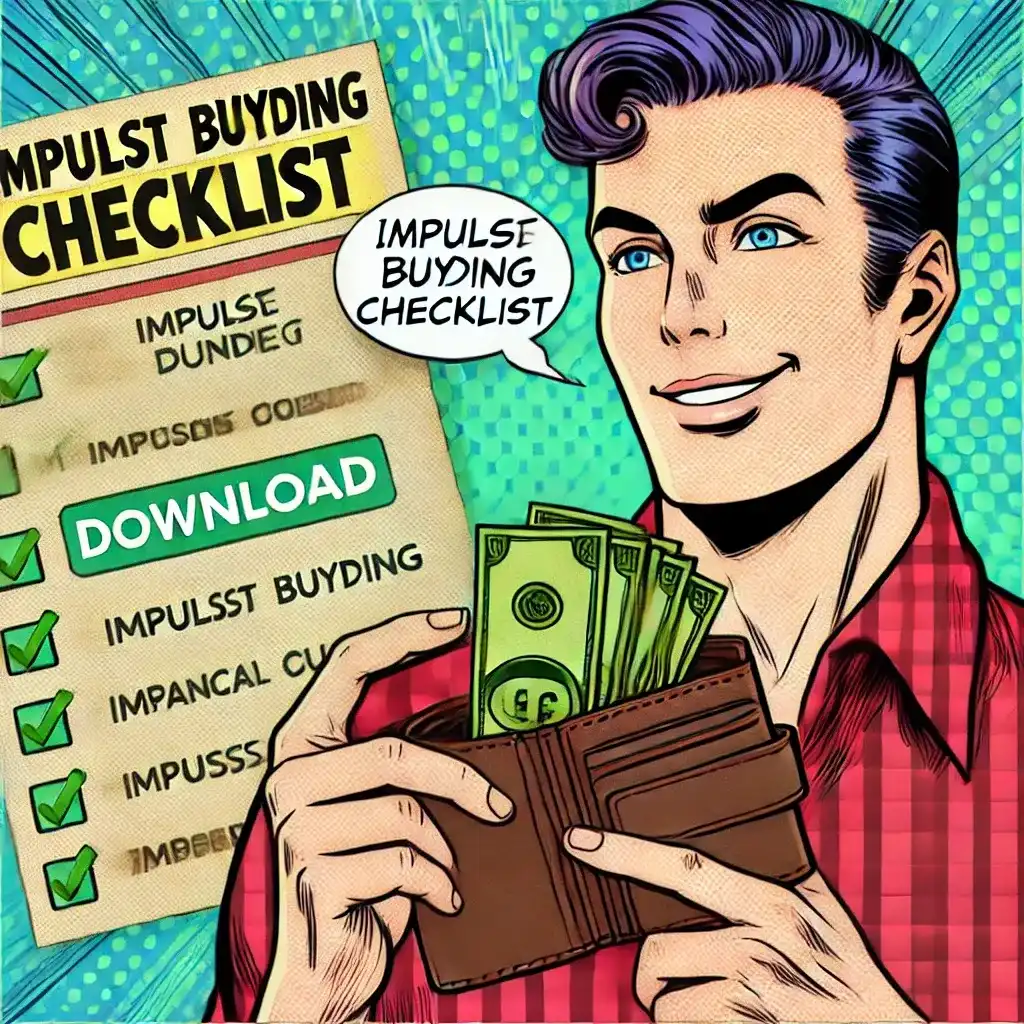
Impulse spending doesn’t have to dictate your finances. Instead of making random purchases, follow an Impulse Buying Checklist to stay in control.
💡 Start small: Pick one or two tips from the Impulse Buying Checklist to try this week and gradually build better spending habits.
📥 Download your free “Impulse Buying Checklist” now and take the first step toward mindful spending and financial freedom!
FAQ
What are the 7 phases of impulse buying?
- Awareness – The consumer becomes aware of a product (e.g., through an ad or in-store display).
- Interest – Curiosity builds, and they start considering the product.
- Desire – Emotional triggers (such as excitement, FOMO, or stress relief) push them toward wanting it.
- Evaluation – They briefly justify the purchase (e.g., “I deserve this” or “It’s on sale, so it’s a good deal”).
- Purchase – The consumer buys the item without prior planning.
- Post-Purchase Guilt or Satisfaction – They either feel regret or satisfaction about the decision.
- Behavioral Reinforcement – If the experience was positive, they may repeat the impulse buying habit in the future.
What is the 1% rule for impulse buys?
The 1% Rule is a strategy to control impulsive spending. It states:
👉 “If a purchase costs more than 1% of your annual income, wait at least 24 hours before buying it.”
For example, if your annual income is $50,000, avoid buying anything over $500 without a cooling-off period to evaluate the necessity.
What are the 4 types of impulse buying?
Impulse buying isn’t always the same—it can be classified into four main types:
- Pure Impulse Buying – A completely unplanned purchase (e.g., buying a chocolate bar at checkout).
- Reminder Impulse Buying – Seeing a product and remembering you need it (e.g., spotting toothpaste on sale and realizing you’re running low).
- Suggestion Impulse Buying – A purchase influenced by marketing or recommendations (e.g., an influencer promotes a skincare product, and you buy it immediately).
- Planned Impulse Buying – Going shopping with a general idea of buying something but not knowing exactly what (e.g., entering a store to browse and ending up buying a trendy gadget).
What are 5 ways you can stop impulse buying?
o curb impulse buying, try these five effective strategies:
- Use the 24-Hour Rule – Pause before buying anything non-essential.
- Set a Monthly Spending Limit – Allocate a fixed budget for discretionary spending.
- Unsubscribe from Marketing Emails – Reduce exposure to tempting promotions and sales.
- Use Cash Instead of Credit Cards – Paying with cash makes purchases feel more “real” and limits overspending.
- Avoid Shopping When Emotional – Recognize when you’re shopping out of stress, boredom, or excitement, and redirect that energy into another activity.

